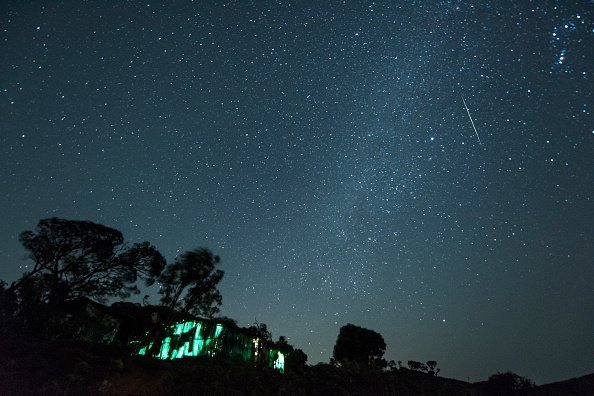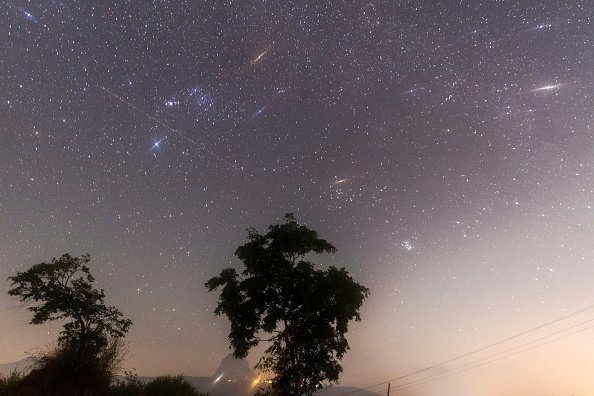
Annual Lyrid Meteor Shower Will Light up the Night Sky This Week
The nights of April 21-22 will provide the world with a chance to take a breather from the COVID-19 outbreak and view nature's beauty in the skies, with the Lyrid meteor shower expected this week.
For the past 2,700 years, the Lyrid meteor shower has appeared on the earth every April, and this year is not going to be any different, with the showers set to appear once more on April 21-22.
The occurrence is sure to cause excitement among many people locked indoors due to the COVID-19 pandemic and will provide a beautiful distraction from news about the disease, even though short-lived.

A meteor streaks across the night sky during the Geminid Meteor Shower over Harishchandra Fort on December 15, 2018 in Ahmednagar, India. | Photo: Getty Images
The Lyrids are one of the oldest meteors ever known, and according to records, were first sighted in 687 BC by the Chinese. Lyrids are known for being fast and bright meteors.
Generally, 10-20 Lyrid meteor showers are expected to light up the night skies, although these showers can surprisingly become heavier, with as many as 100 meteors seen per hour.

Geminid meteor shower seen from Pawna Lake near Lonavala, on December 14, 2017 in Mumbai, India. | Photo: Getty Images
Past sightings of the heavier meteor showers have been recorded in the following city and countries: Virginia, Greece, Japan, and the U.S.A, in the years 1803, 1922, 1945, and 1982, respectively.
To catch a glimpse of these beautiful meteor showers, it is best to find a dark place. Also, go prepared, with a sleeping bag, blanket, or lawn chair. One should lie with the back flat and the feet facing the east.
The Lyrid meteor shower is one of the three meteor showers that appear on earth every year.

A meteor streaks across the night sky during the Geminid meteor shower over Turkey's Van on December 13, 2017. "Geminid" Meteor Shower or "Shooting Stars" in public language was visible from Turkey's Van province. | Photo: Getty Images
Gaze into the sky for about 30 minutes, after which the eye would have adjusted, and then, gradually, one should begin to see the meteors. Don't be in a hurry, because the showers last till dawn.
The radiant for the Lyrid meteor shower is near to the constellation of Lyra, which has a star called Vega that is easy to identify rising in the east. This is why it is advised to look towards the east, although the shooting stars can appear from any part of the sky.
The appearance of the meteor shower provides excitement for many who have been disappointed in their quest to catch sight of a shooting star this year.
The Lyrid meteor shower is caused by the debris from Comet C/1861 G1 Thatcher, a comet that orbits the sun once every 415 years. The debris left behind by the comet leads to the yearly occurrence of the Lyrid meteor shower.

A meteor streaks across the night sky during the Geminid Meteor Shower over Harishchandra Fort on December 15, 2018 in Ahmednagar, India. | Photo: Getty Images
The Lyrid meteor shower is one of the three meteor showers that appear on earth every year, with the others being the Leonids meteor shower, and the Geminids meteor shower.
While the Leonids meteor shower occurs from November 16-17, when the moon is 5% illuminated, the Geminids meteor shower occurs on December 13-14, with the moon 1% illuminated.
